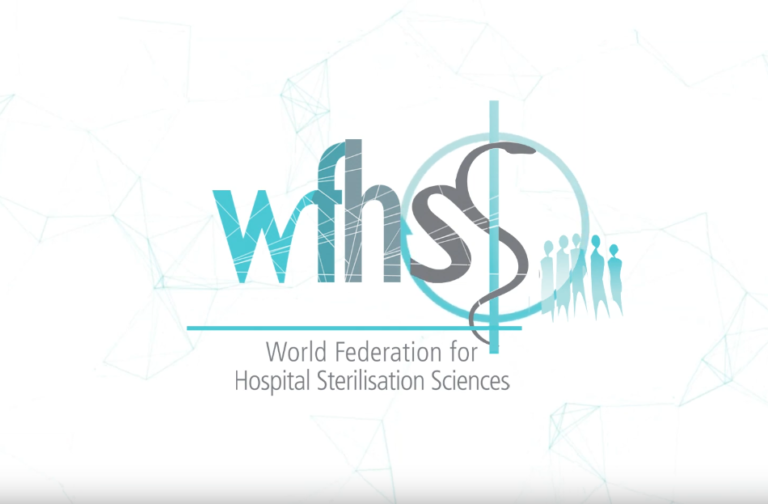使用现场处理包括将复用医疗器械 (RMD) 运送到再处理部门或灭菌部门之前,在使用现场执行的所有操作。
![]() 使用现场和再处理服务部门可能位于不同的位置(在或不在同一建筑物内)。再处理部门的工作人员不一定属于医疗机构的雇员(例如,在服务外包的情况下)
使用现场和再处理服务部门可能位于不同的位置(在或不在同一建筑物内)。再处理部门的工作人员不一定属于医疗机构的雇员(例如,在服务外包的情况下)
使用现场操作人员穿戴合适的防护设备,并且 意识到锐器伤害的风险,并知道在发生事故时应采取的措施, |
使用现场处理的主要目标是:
- 将 RMD 与一次性物品和医疗废物分开。 一次性物品、医疗废物根据适用的医疗废物管理法规进行处理。 对于锐器和针头,需要采取特定的预防措施。
- 按照特定的朊毒体风险应对措施,根据当地法规, 隔离可疑的RMD。
- 避免 RMD 上的污渍干凅
| 当污渍干凅时,会粘在器械上变得难以去除,后续的清洁会更加困难。 管腔可能会被有机物堵塞。 必须避免没有经过处理的RMD过夜或放置一个周末。 长时间的延误处理会让微生物形成保护层促使生物膜的形成,导致常规清洁程序无法去除。 血液、体液和生理盐水具有很强的腐蚀性,会导致器械出现点状腐蚀。 |
- 准备好 RMD将其运送到再处理部门或灭菌部门
将RMD 安全地放置在运输容器中,以避免在运输过程中移动和损坏。 特别注意易碎物品。 锐器需分开放置。 闭合运输容器。 容器带有明确的指示,表明所装的物品具有生物危害性。 生物危害的指示符号由当地法规规定。 如果运输容器的外部有明显污渍,在运输前首先对其进行仔细地清洁去污。 |
使用现场处理操作按照 RMD 制造商的 IFU 执行。
- 在整个手术过程中,根据需要,使用湿润无菌的手术海绵擦拭 RMD 以去除较大的污渍,用无菌水灌注管腔。
- 器械使用后立即擦去外部污染物,冲洗管腔工作通道。软式内窥镜需要特定的措施。
将RMD 安全地放置在运输容器中,以避免在运输过程中移动和损坏。 特别注意易碎物品。 锐器需分开放置。 闭合运输容器。 容器带有明确的指示,表明所装的物品具有生物危害性。 生物危害的指示符号由当地法规规定。 如果运输容器的外部有明显污渍,在运输前首先对其进行仔细地清洁去污。 |
- 按照RMD 制造商的IFU 拆卸手术马达和由多部件组成的RMD 。
- 对于复杂的器械(例如,具有管腔或复杂形状结构的器械),可建议在使用现场进行浸泡。 当地指南可能会有类似的要求或推荐。使用现场浸泡按如下方式实施进行:
清洁和消毒配方符合相应法规和国际标准的要求。 避免如干热或醛类化学剂导致凝固后果。 在专门的水槽中进行浸泡。 溶液浓度和暴露时间取决于制造商的 IFU。 使用中溶液的更换按照当地指南进行。(在处理每一个患者使用过的器械之后,每 24 小时或当溶液出现明显可见污渍时)。 当运送器械到灭菌部门的时间需要很长时(例如在周末或过夜),一些当地指南可能会推荐在使用现场进行自动化预处理措施。 |
- RMD 有序放置在运输容器中。
| 充分保护易碎的 RMD,免受运输人员换班的影响。 微创器械和内窥镜可能需要定位装置。 光学部件放置在专门容器中。 锐器被分隔在容器内 重器械在底部,轻的精密器械在上部。 器械托盘不超载。 容器的大小应避免软式器械过度弯曲。 |
- 使用现场如果没有进行浸泡,并且进行下一步清洁和消毒前的间隔时间很长, (1) 用一条蘸有水(不是生理盐水)的毛巾覆盖在器械上,或 (2) 在能够保持潮湿条件的容器中进行运送。
- 如果进行下一步的清洁的间隔时间很短(最多 6 小时),“干式处理”优于“湿式”处理,能减少 对RMD的 腐蚀。
- 容器是封闭的,最好是可上锁的。
使用现场处理标准操作程序 (SOP) 是根据质量管理原则, 与手术部和医疗诊疗科室合作制定。
使用现场处理的过程验证是为了控制:
- 已经执行培训。
- 职业健康和安全措施到位。
- 知晓并应用医疗废物管理规定。
- 追溯是可行的。
- 标准操作程序 (SOP) 是最新的。

WFHSS 对使用现场处理的建议
- 使用现场处理将 RMD 与一次性物品和医疗废物分开。 采用擦拭、冲洗管腔、在清洁消毒溶液中浸泡来避免污渍干凅。 如果下一步的清洁间隔的时间很长,则在将 RMD 放入闭合的(最好是上锁的)运输容器之前,应采取额外的预防措施。
- 使用现场标准操作程序 (SOP) 是与手术部和医疗诊疗科室合作制定的。
- 处理污染的 RMD, 需要充分了解 RMD,和实行相应的职业健康和安全措施。
- 按质量管理原则实施操作过程。

Used on patient or withdrawn from packaging
Go to Preparation for cleaning – Key principles →
1 of 7 使用现场的清洁准备According to SOP’s Gross soil removal, soaking, careful installation of RMD in closed container
Go to Preparation for cleaning – process →
2 of 7 再处理部门的清洁准备According to SOP’s
Go to Preparation for cleaning – process →
3 of 7 可进行RMD的清洁和消毒RMD prepared for cleaning
Go to Storage – Key principles →
4 of 7SOP’s prepared in partnership with medical or surgical users
Occupational health and safety measures
Go to ![]() WFHSS recommendation for preparation for cleaning →
WFHSS recommendation for preparation for cleaning →
Transfer to sterilization department or reprocessing room
Go to Preparation for cleaning – process →
6 of 7Controls
Go to Preparation for cleaning and quality →
7 of 7ISO 17664-1 :医疗保健产品的处理 – 医疗器械制造商需要提供的处理医疗器械的信息 (2017)













